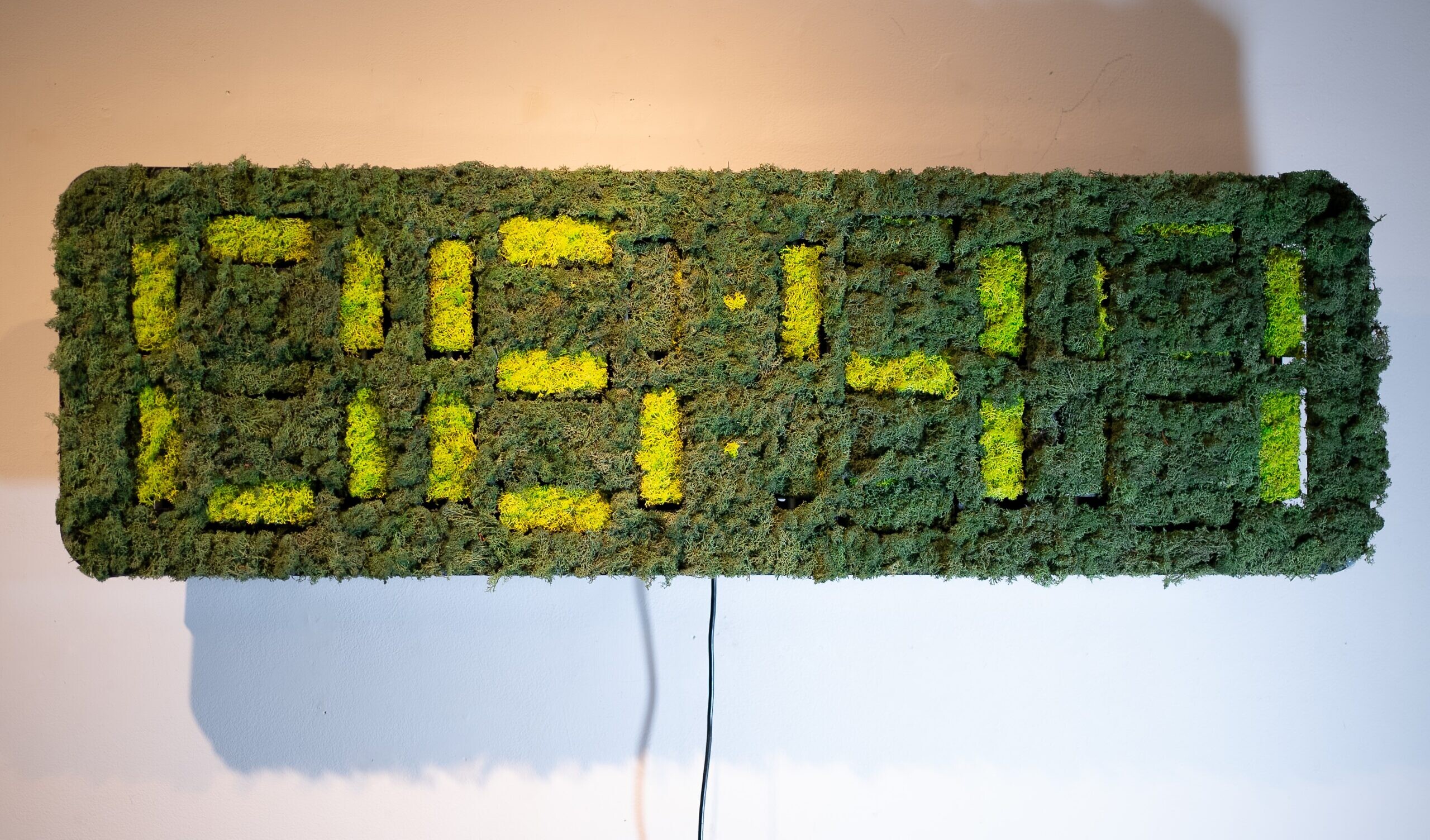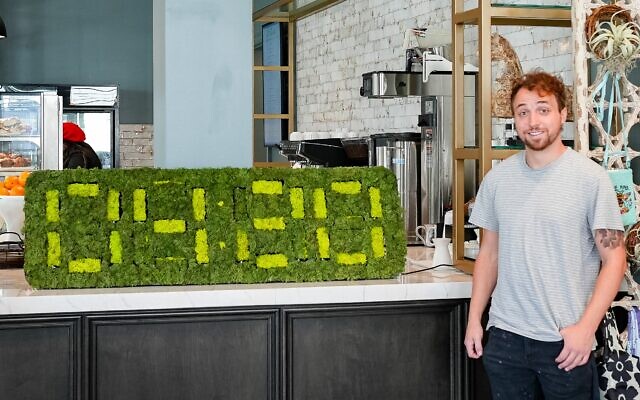Robotics Expert Brings Moss Clock to Life
Dylan Diamond took five months to complete a verdant, functioning digital clock in tandem with today’s trend of featuring nature.
After 37 years with the Atlanta Journal-Constitution and now with the AJT, , Jaffe’s focus is lifestyle, art, dining, fashion, and community events with emphasis on Jewish movers and shakers.
There’s no artist more vibrant, spiritual, or creative than Mother Earth.
Then, we have mortals like Georgia Institute of Technology grad Dylan Diamond, who execute Mother Earth’s designs into functional tools or, in this case, a timepiece: “Moss Clock.”
The clock has its own gear train and servo, or motors. According to Diamond, “Each collection of seven servos controls one of the four numbers that are individually wired to a power supply and microcontroller. The frame of the clock is constructed from computer numerical control (CNC) cut outs while the moving parts have been 3D-printed for its unique design. As for the coding, there’s a relatively simple algorithm to convert a stored time value into positions for the servos. From a few feet away, the clock really does resemble a seamless digital display.”
The bottom line for all: this technology is a clock composed of living moss.
“Moss Clock” was funded by Terry Furuta, who runs a luxury flower shop out of Corso Atlanta and is known for avant-garde floral design. Furuta and Diamond wanted to do something unique with moss and discussed an analog moss clock (essentially a circle cut out with preserved moss placed on it). To take it a step further, Diamond had the idea to make a “digitally inspired” clock where moving panels of different colored moss resemble a classic digital clock display.
Accounting for a few breaks between phases, the clock roughly took five months to complete. It’s a mechatronic timepiece that has 28 panels.

In the planning, as with all prototyping, a lot of things went wrong. Diamond explained, “Whether it was having to redesign how the servo moved the panel, or having to work with parts that were cut the wrong size, countless things went awry. I went through much more 3D-print filament than anticipated, but one of the more unexpected things was how hard it was to accurately describe the work to other people. “
The process started with Diamond making a quick 3D animation using a software program called Blender. He then 3D-printed a prototype of a singular moving panel. After finishing the computer-aided design (CAD) for the entire clock, he ordered the rest of the materials. The CNC cut outs were applied to the plastic and the remaining 3D parts were printed. Then, it was a matter of assembling the mechanical components, wiring, and coding. Once the moss had been glued on and after testing and working out the bugs, the clock was functional. The moss was purchased from Super Moss and has been grown and persevered to last for many years.
Since Diamond has a degree from Georgia Tech, one poses if a lay person could duplicate such a project.
He stated, “My physics degree helped, but I firmly believe that in the age of information, with public access to some many free tutorials and teachers online, anyone can do something like this. This project appears daunting because robotics takes experience in many different areas: mechanical engineering, electrical engineering, computer science, etc., but really, it’s more of being a Jack-of-all-trades than being an expert. You only need to know a little of each one of these.”

For its public viewing, Furuta held an event at The High Museum of Art’s Oasis Night where participants produced still life drawings of her flowers. Diamond displayed the “Moss Clock” nearby as it was an exciting experience finally showing off the project to the world.
As far as other moss projects, “Moss Barbie,” a mannequin stylized with moss and other florals, made its debut. Diamond extols the potential for preserved moss being used in unexpected places. Moss and nature-inspired art is on the rise. This writer visited a real estate headquarters on Peachtree Road where the entire conference room wall was a live mushroom colony – dirt and all.
Diamond remarked, “In a world where everything is prefabricated, it captures a certain sense of comforting wonder that a lot of interiors struggle to achieve.”
Diamond’s mother, artist Linda Mitchell Diamond, said, “Dylan has always loved creating, as a child drawing detailed spaceships, building complicated Legos. His inventiveness leans towards the complex and mechanical, and I’m always impressed by the way his analytical mind approaches processes. When I heard about his ‘Moss Clock,’ I had no idea of its ambitious scope. I was blown away seeing the large functioning clock, such an elaborate and elegant piece of engineering!”




comments